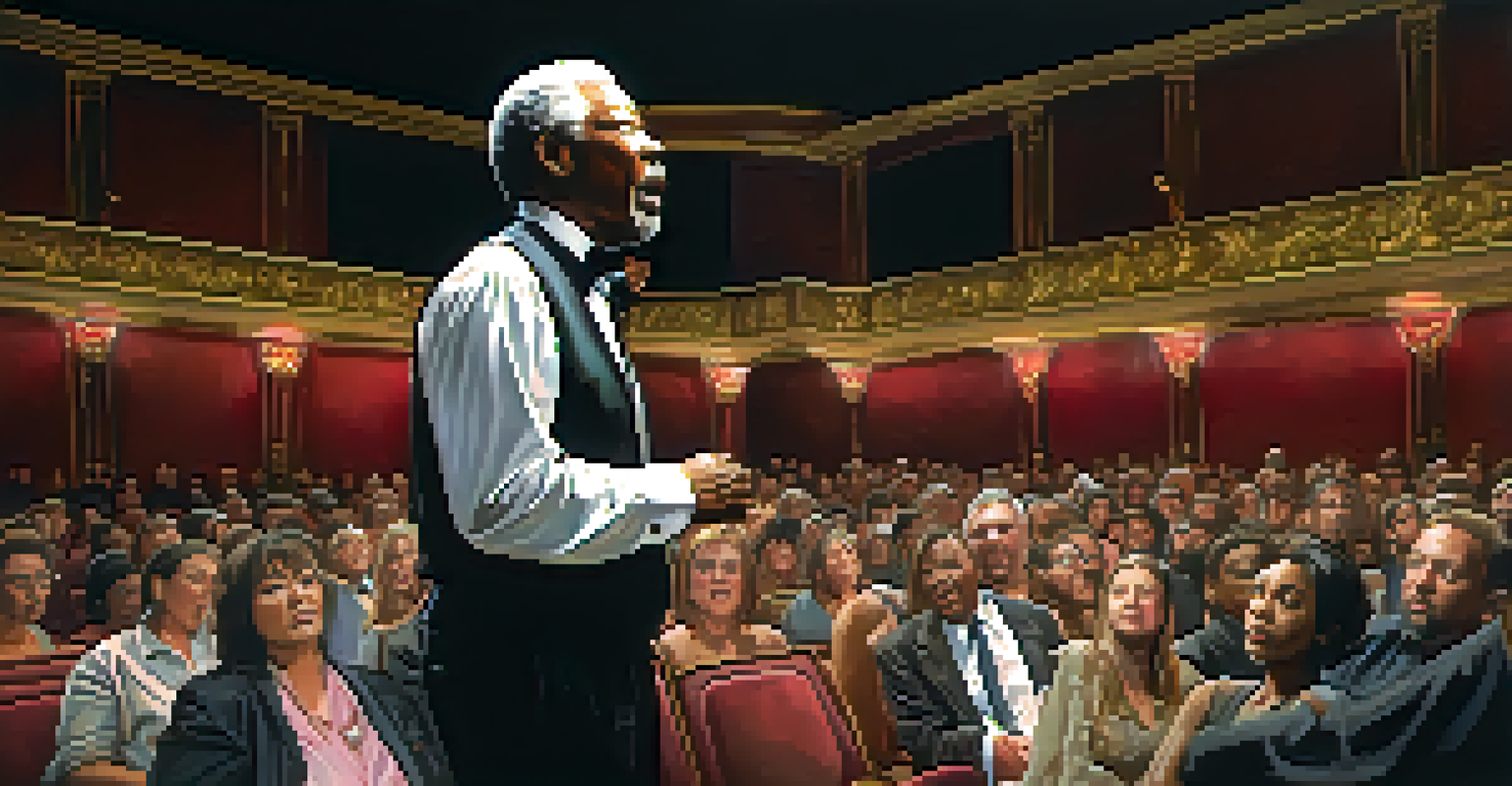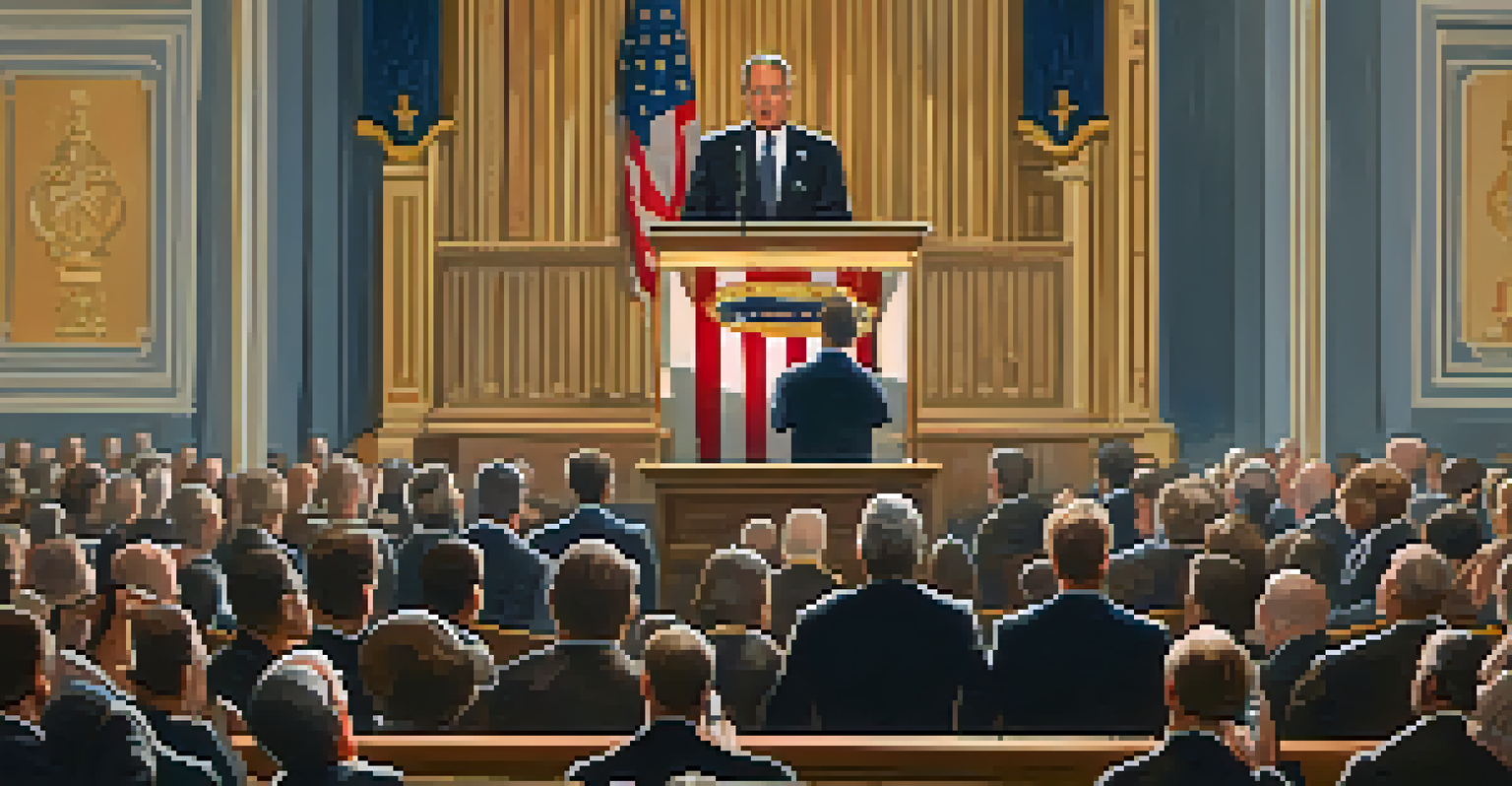The Art of Delivery: Iconic Quotes and Their Performers

The Power of Delivery in Communication
Delivery transforms words into powerful messages. It's not just what you say, but how you say it that leaves an impact.
It's not what you say, but how you say it.
Consider Martin Luther King Jr.'s 'I Have a Dream' speech. The way he delivered it, with passion and rhythm, resonated deeply with listeners.
Effective delivery can evoke emotions, inspire action, and even change perceptions, making it a crucial aspect of effective communication.
Iconic Quotes and Their Contexts
Many famous quotes gained their iconic status due to the context in which they were delivered. For instance, Winston Churchill's wartime speeches rallied a nation during its darkest hours.

Understanding the context enriches our appreciation of these quotes. They often reflect the struggles or triumphs of their time.
Delivery Shapes Impactful Messages
The way we deliver words, through tone, pacing, and body language, significantly influences their emotional resonance and effectiveness.
This historical backdrop adds layers of meaning to the words, enhancing their impact when performed.
The Role of Tone and Emotion
Tone can drastically alter how a quote is perceived. Think of the difference between a serious tone and a light-hearted one when delivering the same line.
Words are, of course, the most powerful drug used by mankind.
Actors like Morgan Freeman masterfully use tone to convey emotion, drawing audiences into the narrative.
When performers infuse their delivery with genuine emotion, it creates a connection that resonates well beyond the words themselves.
Body Language as a Delivery Tool
Body language is a silent yet powerful component of delivery. It can reinforce or contradict what is being said.
For example, Barack Obama often used open gestures and confident stance, which conveyed sincerity and trust.
Context Enriches Iconic Quotes
Famous quotes gain their power not just from their content but from the historical and cultural contexts in which they are delivered.
When combined with spoken words, effective body language can amplify the message and engage the audience more fully.
Pacing: The Rhythm of Delivery
Pacing is essential in delivering a memorable quote. A well-timed pause can heighten tension or emphasize a point.
Think of how a comedian delivers a punchline; the timing can make or break the joke. Likewise, in speeches, pacing can enhance clarity and retention.
Performers like Robin Williams were experts in pacing, using it to draw laughs or provoke thought at just the right moment.
Cultural Influences on Delivery Styles
Cultural background can significantly shape a performer's delivery style. Different cultures have unique traditions and expectations regarding communication.
For instance, some cultures value directness, while others may prioritize subtlety and nuance.
Cultural Styles Affect Communication
Different cultural backgrounds shape unique delivery styles, impacting how messages are received and appreciated across various audiences.
Understanding these cultural differences can deepen our appreciation for how quotes are delivered across various contexts.
Iconic Performers and Their Signature Styles
Certain performers are known for their distinctive delivery styles that elevate the quotes they recite. Think of the gravitas of James Earl Jones or the enthusiasm of Robin Williams.
Their unique styles not only make the quotes memorable but also add a personal touch that resonates with audiences.

These iconic figures remind us that delivery can be an art form in itself, transforming simple words into unforgettable moments.
The Legacy of Powerful Deliveries
The impact of an iconic delivery can last for generations. Quotes from history often become rallying cries or cultural touchstones.
They encapsulate emotions and ideas that resonate through time, reminding us of the power of words.
As we reflect on these deliveries, we recognize the profound influence they have had on society, inspiring change and igniting passions.